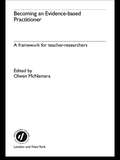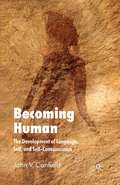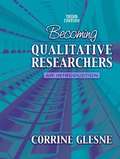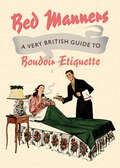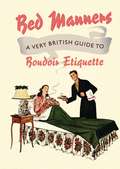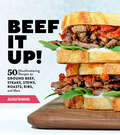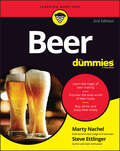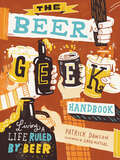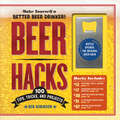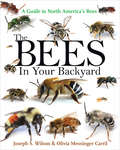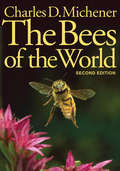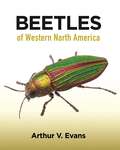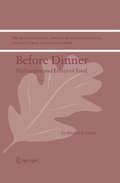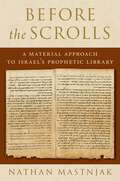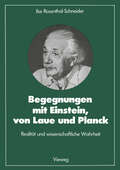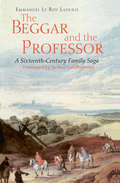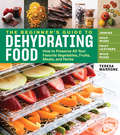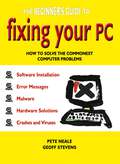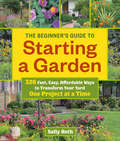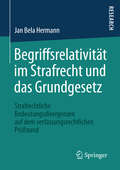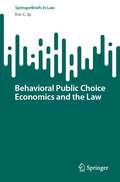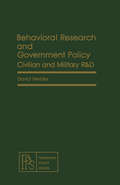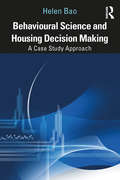- Table View
- List View
Becoming an Evidence-based Practitioner: A Framework for Teacher-researchers
by Olwen McNamara Olwen McnamaraThe world of teacher research is rapidly changing following the introduction of Best Practice Research Scholarships. This was announced by the DfEE as part of a new Professional Development Plan in which teachers are to be allocated up to £3000 to do their own research (non-award bearing) with the support of an HE mentor. The TTA also believes that teachers should play a more active role in conceiving, implementing, evaluating and disseminating research.This book is for teachers who are looking, or being encouraged, to undertake research in their schools. Written by teachers and their HE research mentors, the book provides case studies which show teachers how to 'do' and 'use' research and how to 'do' effective pedagogy. Olwen MacNamara shows how a group of teachers set out to observe, describe, analyse and intervene in areas of primary education. The book can be raided for insights into research methods as well detailing professional issues about teaching and learning, and will be essential reading for teachers undertaking Best Practice Research Scholarships.
Becoming Human: The Development of Language, Self and Self-Consciousness
by J. CanfieldThis book is a philosophical examination of the stages in our journey from hominid to human. Dealing with the nature and origin of language, self-consciousness, and the religious ideal of a return to Eden, it has a philosophical anthropology approach. It provides an account of our place in nature consistent with both empiricism and mysticism.
Becoming Qualitative Researchers: An Introduction (PDF)
by Corrine GlesneThis text offers a brief but comprehensive overview of qualitative research that balances the practicalities of conducting research and the theory and debates that keep qualitative inquiry vibrant. As faculty and students increasingly turn to qualitative inquiry, they need a text that will not only provide them with an understanding of qualitative research methods, but also open them to the diverse possibilities within this inquiry approach. This text covers the range of possibilities along with numerous exercises that offer beginning students the opportunity to practice and refine the skills of being a qualitative researcher. The wealth of examples in the text is exceptional, as is the accessible writing style. This edition: situates ethnographic/ qualitative research in context and traces its history, illustrating some of the tensions in qualitative research approaches and practices in the past and present; . . .
Bed Manners: A Very British Guide to Boudoir Etiquette (Old House Ser.)
by Bloomsbury PublishingA vintage light-hearted guide to the fraught battlefield of bedroom etiquette ... Ever wanted to know how to avoid horrifying your husband with your nightly toilette? Or avoid incurring the wrath of your wife when creeping home late at night? First published in the 1930s, the humorous advice in 'Bed Manners' reveals the rules of bedroom etiquette, including whose responsibility it is to investigate strange sounds, how to make morning conversation, and coping with a bedfellow who kicks, snores or steals all the covers.
Bed Manners: A Very British Guide to Boudoir Etiquette
by Bloomsbury PublishingA vintage light-hearted guide to the fraught battlefield of bedroom etiquette ... Ever wanted to know how to avoid horrifying your husband with your nightly toilette? Or avoid incurring the wrath of your wife when creeping home late at night? First published in the 1930s, the humorous advice in 'Bed Manners' reveals the rules of bedroom etiquette, including whose responsibility it is to investigate strange sounds, how to make morning conversation, and coping with a bedfellow who kicks, snores or steals all the covers.
Beef It Up!: 50 Mouthwatering Recipes for Ground Beef, Steaks, Stews, Roasts, Ribs, and More
by Jessica FormicolaWhere&’s the beef? It&’s on the dinner table tonight! This focused collection of recipes offers 50 tasty ways to serve up protein-rich beef meals without a lot of fuss. Flavorful beef suppers (Cheeseburger Soup, Shepard&’s Pie Mac & Cheese) are featured along with new classics (Sheet Pan Steak Fajitas, 20-Minute Mongolian-style Beef ), salads (Southwest Steak Salad w/ Chipotle Ranch and Steakhouse Salad w/ Blue Cheese), quick hits (Empanada Hand Pies and Beef Satay with Peanut Sauce), and the tried-and-true burgers, steaks, and chili. Juicy photos provide the inspiration and confidence cooks of all levels need to deliver on the promise of a great meal every time. This publication conforms to the EPUB Accessibility specification at WCAG 2.0 Level AA.
Beer For Dummies
by Marty NachelBecome fluent in the universal language of beer Beer For Dummies is your companion as you explore the wide world of the third most-consumed beverage globally. Learn to recognize the characteristics of ales, lagers, and other beer styles. Perfect beer-and-food pairings. And embark on the ultimate beer tour, Dummies-style! Whether you're a beer novice or a brewery regular, there’s always something new to learn. We’ll help you pick the right beer for any occasion, understand why beers taste the way they do, and give you a handy reference to their strengths and ideal serving temperatures. This updated edition takes you a journey around the world of new beers—hazy-juicy in the U.S., Italian grape ale, Brazilian Catarina sour. You’ll also get up to date on the latest beer review apps and how the internet is shaping and reshaping beerdom. Cheers! Make an informed choice when selecting a beer and pairing with food Learn the fascinating process of brewing the different types of beer Discover world beer culture and new beer innovations Heighten your enjoyment of the subtleties of craft beerThis book is an excellent resource for aiding your understanding, purchasing, drinking, and enjoyment of beer.
Beer For Dummies
by Marty NachelBecome fluent in the universal language of beer Beer For Dummies is your companion as you explore the wide world of the third most-consumed beverage globally. Learn to recognize the characteristics of ales, lagers, and other beer styles. Perfect beer-and-food pairings. And embark on the ultimate beer tour, Dummies-style! Whether you're a beer novice or a brewery regular, there’s always something new to learn. We’ll help you pick the right beer for any occasion, understand why beers taste the way they do, and give you a handy reference to their strengths and ideal serving temperatures. This updated edition takes you a journey around the world of new beers—hazy-juicy in the U.S., Italian grape ale, Brazilian Catarina sour. You’ll also get up to date on the latest beer review apps and how the internet is shaping and reshaping beerdom. Cheers! Make an informed choice when selecting a beer and pairing with food Learn the fascinating process of brewing the different types of beer Discover world beer culture and new beer innovations Heighten your enjoyment of the subtleties of craft beerThis book is an excellent resource for aiding your understanding, purchasing, drinking, and enjoyment of beer.
The Beer Geek Handbook: Living a Life Ruled by Beer
by Patrick DawsonA humorous yet practical guide for beer geeks everywhere: what to drink, how and where to drink it, the proper vocabulary for discussing beer, and all the finer points of beer-geek etiquette.
Beer Hacks: 100 Tips, Tricks, and Projects
by Ben RobinsonBeer drinking is about to get even more fun, with 100 inventive tips and hacks for improving how you taste, store, serve, or save your brews (including fun projects that use the cans and bottles). A gift for any beer lover, this book celebrates and appreciates their passion with a splash of fun and without taking itself too seriously.
The Bees in Your Backyard: A Guide to North America’s Bees
by Joseph S. Wilson Olivia J. Messinger CarrilThe Bees in Your Backyard provides an engaging introduction to the roughly 4,000 different bee species found in the United States and Canada, dispelling common myths about bees while offering essential tips for telling them apart in the field.The book features more than 900 stunning color photos of the bees living all around us—in our gardens and parks, along nature trails, and in the wild spaces between. It describes their natural history, including where they live, how they gather food, their role as pollinators, and even how to attract them to your own backyard. Ideal for amateur naturalists and experts alike, it gives detailed accounts of every bee family and genus in North America, describing key identification features, distributions, diets, nesting habits, and more.Provides the most comprehensive and accessible guide to all bees in the United States and CanadaFeatures more than 900 full-color photosOffers helpful identification tips and pointers for studying beesIncludes a full chapter on how to attract bees to your backyard
The Bees of the World
by Charles D. MichenerIn this extensive update of his definitive reference, Charles D. Michener reveals a diverse fauna that numbers more than 17,000 species and ranges from the common honeybee to rare bees that feed on the pollen of a single type of plant. With many new facts, reclassifications, and revisions, the second edition of The Bees of the World provides the most comprehensive treatment of the 1,200 genera and subgenera of the Apiformes. Included are hundreds of updated citations to work published since the appearance of the first edition and a new set of plates of fossil bees.The book begins with extensive introductory sections that include bee evolution, classification of the various bee families, the coevolution of bees and flowering plants, nesting behavior, differences between solitary and social bees, and the anatomy of these amazing insects. Drawing on modern studies and evidence from the fossil record, Michener reveals what the ancestral bee—the protobee—might have looked like. He also cites the major literature on bee biology and describes the need for further research on the systematics and natural history of bees, including their importance as pollinators of crops and natural vegetation. The greater part of the work consists of an unprecedented treatment of bee systematics, with keys for identification to the subgenus level. For each genus and subgenus, Michener includes a brief natural history describing geographical range, number of species, and noteworthy information pertaining to nesting or floral biology.The book is beautifully illustrated with more than 500 drawings and photographs that depict behavior, detailed morphology, and ecology. Accented with color plates of select bees, The Bees of the World will continue to be the world's best reference on these diverse insects.
Beetles of Western North America
by Arthur V. EvansFrom the author of the acclaimed Beetles of Eastern North America, a triumphant follow-up guide to western beetles, lavishly illustrated with more than 1,500 stunning color photographsBeetles of Western North America is a landmark book—the only comprehensive color photographic guide to the remarkably diverse and beautiful beetles of the United States and Canada west of the Continental Divide. A triumphant follow-up to Arthur Evans’s highly regarded Beetles of Eastern North America, this engaging and accessible book covers 1,428 species from all 131 families that occur in the West. The book is lavishly illustrated with more than 1,500 stunning images by some of the best insect photographers in North America.An extensive introduction provides essential information on beetle anatomy, natural history, behavior, and conservation, as well as tips on where and when to find beetles; how to photograph, collect, and rear them; and how to contribute to research. Beetles of Western North America is organized by family, and each family and species account presents concise and easy-to-understand information on identification, natural history, collecting, and geographic range. The book includes current information on distribution, biology, and taxonomy not found in other guides, and features an illustrated identification key to the most common beetle families.An unmatched guide to the rich variety of western North American beetle fauna, this is a must-have book for amateur naturalists, nature photographers, insect enthusiasts, students, professional entomologists, and other biologists.The only comprehensive color photographic guide to the region’s beetlesCovers 1,428 species from all 131 families west of the Continental Divide, and offers tips for identifying more than 450 additional speciesFeatures more than 1,500 stunning color photographsPresents concise information on identification, natural history, collecting, and geographic range for each species and familyIncludes an illustrated identification key to the most common beetle families
Before Dinner: Philosophy and Ethics of Food (The International Library of Environmental, Agricultural and Food Ethics #5)
by M. KorthalsThis book is an extensive, original and systematic treatment of many important philosophical and ethical aspects of food (consumption and production). May we eat just anything? Can we do everything with animals, even genetic modification? If not, how can we regulate those processes so that they lead to optimum animal welfare while at the same time producing optimum taste? The production of food also causes environmental pollution – does the fight against hunger have priority over the care of the environment? The care of the environment, animal welfare, and the quality of food should be in a certain harmony, but that is far from granted and hardly easy to achieve. These factors are often in conflict with each other, and a balance will thus need to be searched for. Other factors to take into consideration are the issue of global famine, the care for a farming class that is able to keep its head above water in a decent way, and a fair trade system that does not throw up unnecessary barriers for newcomers or small market participants and that promotes good nutrition. Famine continues to be a widespread phenomenon that violates human rights, causing nearly a billion people to suffer from hunger or malnutrition. At the same time, deliberate hunger, abundance, and obesity are prevalent in the Western world. Both issues refer to the social and cultural aspects of food. Scientific and technological developments like genetic modification and functional food also play an increasingly important role; almost every bite that we take is determined by scientific developments. An extra difficulty is that scientific information is often contradictory, or that it relies on statistical probabilities that are difficult to translate into everyday certitudes. All of these factors deserve attention, but it is the mix that is most important. In the land of food, ‘either or’ does not exist, only ‘both and’. The adequate measure of ‘both and’ serves as the starting point for this philosophical reflection. Before Dinner is a must-read for all people interested in contemporary ethical issues of food, such as university students and researchers of food, agricultural and life sciences, as well as policymakers in these fields, such as members of professional organisations focusing on food and agriculture (f.e., EURSAFE (European Society for Agriculture and Food Ethics), the Agriculture, Food and Human Values Society (USA), and European Federation of Biotechnology).
Before the Scrolls: A Material Approach to Israel's Prophetic Library
by Nathan MastnjakBefore the Scrolls traces the media history of the biblical prophetic corpus to propose a material approach to biblical literature. Although scholars understand that the material of composition was the scroll rather than the codex, they persist in imagining the form as a single textual object. This assumption pervades centuries of scholarship and drives many of the questions asked about biblical composition. Nathan Mastnjak raises the question of the original physical format of biblical texts and argues that many of the literary works that would eventually become the Bible's prophetic books were not written initially as books. Isaiah, Jeremiah, and Ezekiel were originally composed on loosely organized collections of multiple short papyrus scrolls and sheets. Though rarely considered in scholarship, the realia of a text's form, format, production, and material substance have a profound influence on the meaning of the text. Unlike works committed to single book-scrolls, these collections did not have predetermined orders of reading and were susceptible to multiple arrangements. Only in the Hellenistic era were these compositions edited, organized, and copied into single volume book-scrolls such as those known from the Dead Sea. By investigating the relationship between form and meaning and the transition from the collection to the book, Mastnjak suggests novel solutions to classic problems in biblical scholarship, such as the relationships between the MT and LXX of Jeremiah and that between First and Second Isaiah. The failure to account for the materiality of the prophetic corpus has led scholarship to occasionally ask the wrong questions of these compositions and has blinded it to the vital role that Hellenistic bookmakers played in the creation of the Bible as we know it. Reconceiving much Judean literature on a collection-model rather than book-model has significant implications for our understanding of how the Bible itself was composed and read.
Before the Scrolls: A Material Approach to Israel's Prophetic Library
by Nathan MastnjakBefore the Scrolls traces the media history of the biblical prophetic corpus to propose a material approach to biblical literature. Although scholars understand that the material of composition was the scroll rather than the codex, they persist in imagining the form as a single textual object. This assumption pervades centuries of scholarship and drives many of the questions asked about biblical composition. Nathan Mastnjak raises the question of the original physical format of biblical texts and argues that many of the literary works that would eventually become the Bible's prophetic books were not written initially as books. Isaiah, Jeremiah, and Ezekiel were originally composed on loosely organized collections of multiple short papyrus scrolls and sheets. Though rarely considered in scholarship, the realia of a text's form, format, production, and material substance have a profound influence on the meaning of the text. Unlike works committed to single book-scrolls, these collections did not have predetermined orders of reading and were susceptible to multiple arrangements. Only in the Hellenistic era were these compositions edited, organized, and copied into single volume book-scrolls such as those known from the Dead Sea. By investigating the relationship between form and meaning and the transition from the collection to the book, Mastnjak suggests novel solutions to classic problems in biblical scholarship, such as the relationships between the MT and LXX of Jeremiah and that between First and Second Isaiah. The failure to account for the materiality of the prophetic corpus has led scholarship to occasionally ask the wrong questions of these compositions and has blinded it to the vital role that Hellenistic bookmakers played in the creation of the Bible as we know it. Reconceiving much Judean literature on a collection-model rather than book-model has significant implications for our understanding of how the Bible itself was composed and read.
Begegnungen mit Einstein, von Laue und Planck: Realität und wissenschaftliche Wahrheit (Facetten der Physik #12)
by Ilse Rosenthal-SchneiderDer Glaube an die Gesetzmäßigkeit der Natur, das Streben, allge meine und universell gültige Gesetze zu finden, und die Hoffnung - oder sogar Erwartung -, der "Wahrheit" über die "Wirklichkeit" näher zu kommen, haben ihren Grund in einer besonderen persönlichen Welt sicht, die tiefere Wurzeln als alle naturwissenschaftlichen Disziplinen und philosophischen Systeme hat. Der persönliche Kontakt mit einem schöpferischen Geist ist anre gend, er verstärkt den Drang nach Verstehen und vergrößert die Be friedigung, wenn Aufklärung zuteil wurde. Wenn dies durch Mathema tik oder eine theoretische Disziplin erfolgt, ist diese Befriedigung dem Vergnügen verwandt, das man an schöner Musik oder anderen wahren Kunstwerken empfindet. Es war mein großes Glück, an der Universität Berlin studieren zu können, als Einstein, von Laue und Planck dort lehrten. Ihr Werk prägte mich stark und dauerhaft. Ich erhielt Einblick in ihr Denken, die ihnen eigenen Methoden und schließlich in ihre Persönlichkeit. Ich möchte einige meiner Erinnerungen in der Hoffnung wiedergeben, ihre Ansichten und ihre Persönlichkeit für die, die sie kannten, lebendig zu erhalten und für alle anderen erstehen zu lassen.
The Beggar And The Professor: A Sixteenth-century Family Saga
by Emmanuel Le Roy-Ladurie Arthur GoldhammerIn 1499 in the mountians of Valais, Thomas Platter was born and abandoned. At the age of 10 he walked barefoot out of the hills into the turbulence of 16th century Europe. He wandered the breadth of Europe for nearly 10 years with nomadic beggars and thieves until a chance encounter sparked a humanist conversion, propelling him from illiterate pauper to esteemed professor, printer and, ultimately, patriarch. From autobiographical writings - diaries, travel journals, memoirs - Emmanuel Le Roy Ladurie reconstructs the life of Thomas Platter and of his sons. Their careers spanned the entire 16th century, experiencing the close of the Renaissance, the sharp upheaval of the Reformation and the advent of a new bougeoisie. These personal narratives constitute an intimate portrait of the emergence of early modern European society.
The Beginner's Guide to Dehydrating Food, 2nd Edition: How to Preserve All Your Favorite Vegetables, Fruits, Meats, and Herbs
by Teresa MarroneThis essential companion for putting your food dehydrator to work features instructions and techniques for drying all the most popular fruits and vegetables, along with meat and herbs. You&’ll learn to dry fruits and vegetables at their peak, giving you an easy and economical way to stock your pantry with apple rings, mango slices, banana chips, dried soup beans, tomatoes, and much more for year-round enjoyment. In addition, drying guidelines for specialty items like meat jerky, fruit leather, dried herb and spice mixtures, backpacking meals, and even baby food round out this friendly handbook. This publication conforms to the EPUB Accessibility specification at WCAG 2.0 Level AA.
The Beginner's Guide to Fixing Your PC: How to Solve the Commonest Computer Problems
by Geoff Stevens Pete NealeThe computer won’t work. Before you pick up the phone or take it to the nearest repair shop, use this book. In an easy-to-follow format, it deals with everything from everyday problems to major disasters. Its check list and tips will ensure that even if you’re a beginner, you’ll have a solution at your fingertips.
The Beginner's Guide to Starting a Garden: 326 Fast, Easy, Affordable Ways to Transform Your Yard One Project at a Time
by Sally RothThe Beginner&’s Guide to Starting a Garden: 326 Fast, Easy, Affordable Ways to Transform Your Yard One Project at a Time simplifies the garden design process by showing you how to tackle one small area at a time.
Begriffsrelativität im Strafrecht und das Grundgesetz: Strafrechtliche Bedeutungsdivergenzen auf dem verfassungsrechtlichen Prüfstand
by Jan Bela HermannJan Bela Hermann lotet die verfassungsrechtlichen Grenzen der Relativität der (Rechts)begriffe im materiellen Strafrecht aus. Dabei steht das Gesetzlichkeitsprinzip des Art. 103 Abs. 2 GG im Zentrum der Aufmerksamkeit. Im Anschluss an Ausführungen zu den maßgeblichen sprach- und rechtstheoretischen sowie verfassungsrechtlichen Grundlagen gelangt der Autor zu abstrakten Thesen, um im zweiten Teil der Arbeit konkrete Beispiele strafrechtlicher Begriffsrelativität in Form von bedeutungsdivergierenden Verwendungen und Auslegungen „zeichenkettenidentischer Begriffe“ auf ihre verfassungsrechtliche Zulässigkeit hin zu überprüfen. Im Blickpunkt steht dabei beispielsweise die semantische Spaltung des Ausdrucks „gefährliches Werkzeug“, welche der Autor als verfassungswidrig einstuft.
Behavioral Public Choice Economics and the Law (SpringerBriefs in Law)
by Eric C. IpThis book provides an accessible introduction to the emerging field of behavioral public choice economics and the law. This field studies how public officials, lawmakers, and judges fall prey to their own biases and heuristics, and how constitutions and judicial doctrines can be structured to mitigate these cognitive shortcomings. Written lucidly in plain language, this book is invaluable to all students, scholars, and general readers interested in behavioral economics, law and economics, and political economy.
Behavioral Research and Government Policy: Civilian and Military R&D
by David MeisterBehavioral Research and Government Policy: Civilian and Military R&D explains the influence that the government have on research and development in the field of behavioral science. The book explores the different aspects in conducting a research with the main focus on the sponsor of the study. The book is the second part of a journal series titled International Reviews in Aerosol Physics and Chemistry. The text offers significant understanding of the methods employed to develop a theory for thermophoretic and diffusiophoretic forces acting on spheres in the range from free molecules to continuum behavior. The book explores the mathematical solution for the kinetic model of the coagulation equation. Another topic of interest is the means to estimate size dispersal function for clouds of particles undergoing collision. The text can be a useful tool for practicing scientists and to graduate students in physics, meteorology, geophysics, physical chemistry, environmental science, medicine, chemical engineering, and aerospace engineering.
Behavioural Science and Housing Decision Making: A Case Study Approach
by Helen BaoThis book takes a behavioural approach to examine six important housing questions: tenure decision, gentrification, place attachment, housing bubbles, housing wealth, and residential satisfaction. Using experimental and field data, the book demonstrates the effects of six behavioural biases and heuristics (i.e., anchoring and reference dependence, loss aversion, mental accounting, endowment effect, herd behaviours, and social comparison) on these housing decisions. The first part of the book introduces the questions and provides a behavioural science toolbox before the second part adopts a real-world case study approach. Real data sets and suggested answers are provided, and the cases come from the UK, USA, and China. Background information is given in each case to facilitate the understanding of the case data and question, as well as the discussions on the results. This book is ideal supplementary reading on a variety of courses such as housing studies, economics, real estate, research methods, and for students and academics who are interested in the application of behavioural science in housing decisions.
